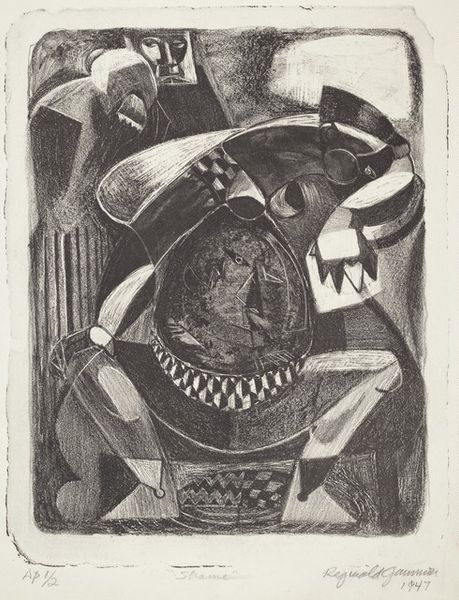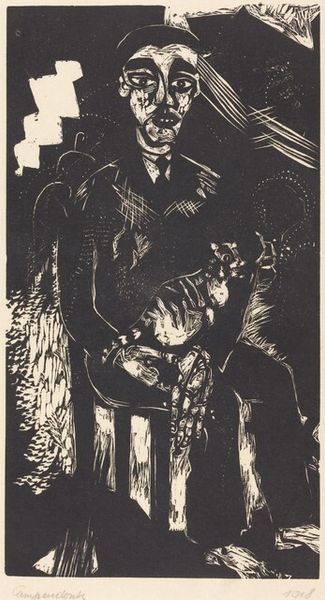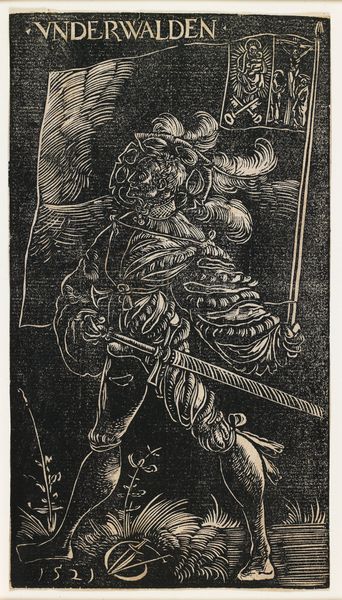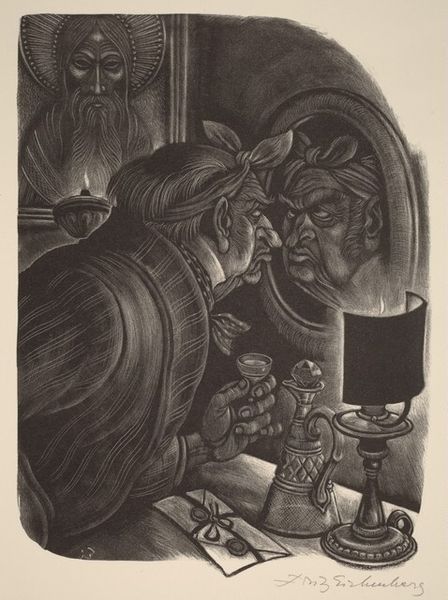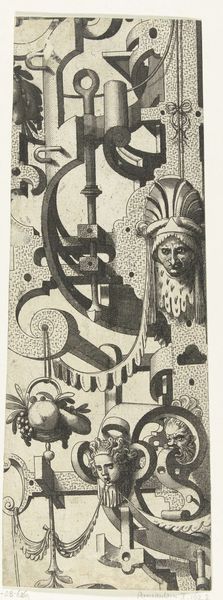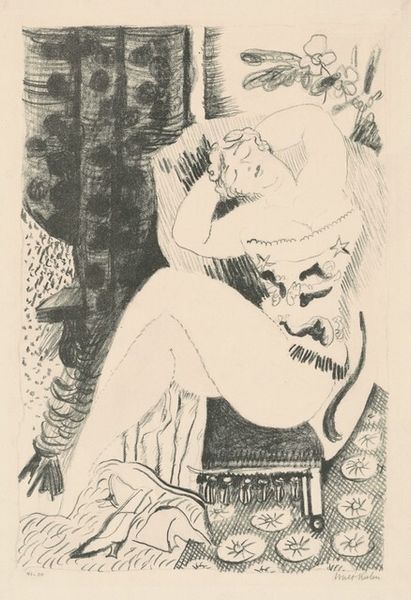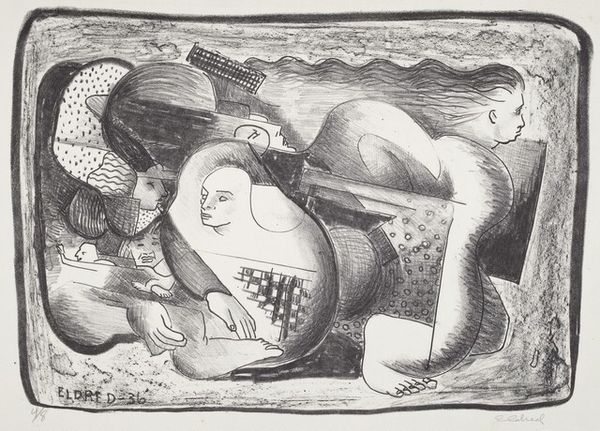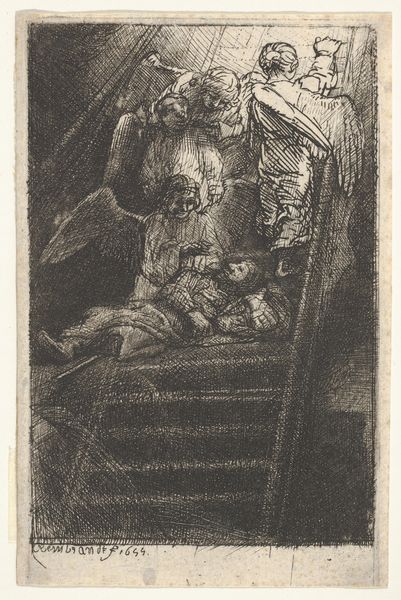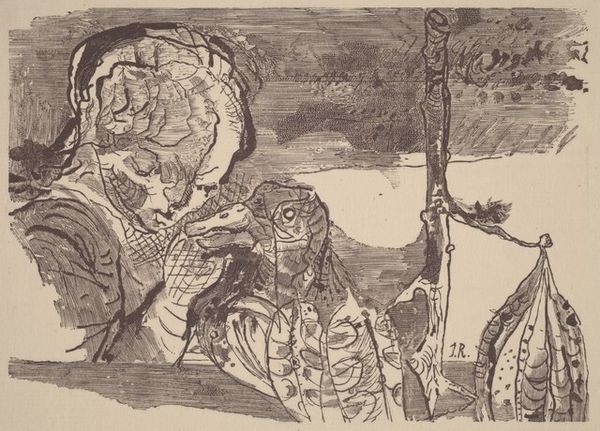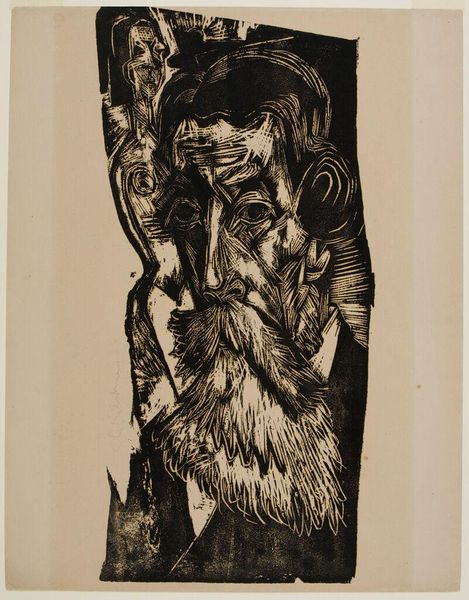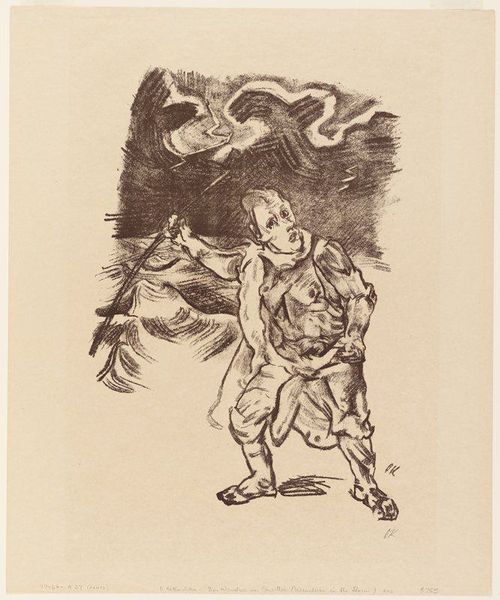
Dimensions: Image: 302 x 238 mm Sheet: 399 x 238 mm
Copyright: National Gallery of Art: CC0 1.0
Editor: This is John S. Moxom's "Liberation," created around 1937 using ink. It looks like a chaotic dream, with these towering figures and strange mechanical elements all rendered in incredibly dense lines. The scale of the central figure really dominates the composition. What do you see when you look at this print? Curator: The density of lines certainly contributes to the overall impact. The interwoven forms lack clear spatial differentiation, collapsing foreground and background. The tonal range, achieved purely through line density and direction, oscillates, negating a clear focal point. Do you agree? Editor: I do. The eye really bounces around, never settling. All those intersecting lines create a kind of visual tension. It feels unstable, unresolved. But what does it mean? Curator: Meaning is constructed, not inherent. Notice the recurring motifs of machinery. The mechanical components—the tubes, the dials—appear almost parasitic, intertwined with the figures. Consider this not as symbolism but as a study of formal relationships. The artist sets organic form against the mechanistic one, playing with the density and texture of their renderings. Do you see how that contrast functions? Editor: I think so. The hard edges of the machines clash with the softer, more flowing lines of the human figures. There’s almost a struggle visible in the mark-making itself. Curator: Precisely. So, forget “Liberation” for a moment. Think instead of how form dictates content. Through line and composition, Moxom has crafted a space of profound unease. Editor: That makes a lot of sense. I was so focused on trying to decipher a message that I missed the power of the actual lines and shapes themselves. Thanks for that shift in perspective!
Comments
No comments
Be the first to comment and join the conversation on the ultimate creative platform.
